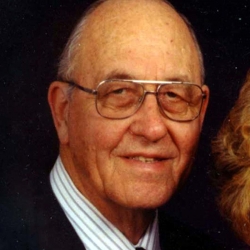
P. William Dysinger, MD, MPH
The Historical Perspective of Health Evangelism in the Adventist Church—Part 1
The Seventh-day Adventist Church took possession of the Loma Linda property on July 1, 1905, and the first patient registered on October 12 of the same year. No working capital existed; thus, no one had any assurance they would receive a salary. Nonetheless, by November 1, 35 staff members reported for duty. By Christmas of 1905, 25 patients were comfortably lodged in the new sanitarium.
In April of 1906, Ellen G. White returned to Loma Linda, this time with Elder and Mrs. Stephen Haskell from New England. She intended that they should teach, and that they should sponsor evangelistic activities. They all participated in the April 15 dedicatory service of the “Loma Linda Sanitarium.” This service included Ellen White eloquently charging the audience to open a training center for “medical evangelism.”
The College of Evangelists (as it was called for its first four years) opened on September 20, 1906. Early administrators agreed on some definitions, but others aroused confusion. The word College indicated a center for education. No problem here. Evangelism meant to share the “good news” of the gospel with others. Medical Evangelism had to refer to telling the public that God wants to help humankind recover its original perfect health. Defined by soundness of body, mind, and spirit;Health, then, would include more than just the absence of disease or disability.
The Southern California Adventists based their project solidly on Scripture. Physical health was of equal importance to spiritual health. “Beloved, I pray that you may prosper in all things and be in health, just as your soul prospers.” (3 John 2) Again, “if anyone defiles the temple of God, God will destroy him. For the Temple of God is holy, which temple you are.” (1 Cor. 3:17; 6:20. 21) Thus, violation of nature’s laws becomes a moral problem. “Therefore, whether you eat or drink, or whatever you do, do all to the glory of God.” (1 Cor. 10:31) That is, God is interested in a total and very comprehensive definition of health. In keeping with Heaven’s policy of free choice, however, people’s participation in lifestyle changes had to be strictly voluntary.
Putting the Pieces Together
As manager of the embryonic institution, John Burden faced the challenge of creating an “evangelistic-medical course” that would conform to Ellen White’s injunction, “Many workers (one time she said “thousands”) are to be qualified with all the ability of physicians to labor, not as physicians, but as medical missionary evangelists.” It would take decades of effort—and, yes, conflict—to try and implement this inherently paradoxical statement. We still, unfortunately, have not attained this goal.
During the first school year (1906-07) five women enrolled as freshman “medical students.” At the same time, the same five were also listed as “senior nursing students.” Nursing and public health education training (“the evangelistic-medical course”), both three-year programs, were clearly the core beginnings of medical training at Loma Linda. In addition to these programs, two other courses were announced that first year: 1) the Collegiate Course—designed for those wishing to experience sanitarium work before continuing in other studies, and 2) the Gospel Worker’s Course—field training intended to be a constituent part of each of the core programs.
Formulating a curriculum called for Burden’s best skills. Aged 43, with 14 years of sanitarium work behind him, he served both as business manager and chief mentor of Loma Linda education for the next 10 years. Additionally, he served as chaplain to the Sanitarium and brought together a small Seventh-day Adventist congregation on campus.
Not surprisingly, nobody seemed to know exactly what the evangelistic-medical course should be. Moreover, someone still had to figure out exactly how it would fit into the organized work of the Church. The third college prospectus in 1909 admitted that the school was not “as yet” prepared “to grant the usual medical degree.” That same prospectus included the following announcement:
“It is expedient that the principles underlying the educational work of this newly established college shall become known among us as widely as possible. There are many vital principles outlined in the [writings of Ellen G. White] which bear directly upon the methods to be employed in medical evangelistic education. Among these are the following:
- The Bible should be made the basis of all education.
- Practical experience under competent instructors should form a larger part of the curriculum than is usual. Long courses devoid of practical experience are detrimental to the development of spirituality and practical usefulness. Evangelistic experience is equally important with medial experience.
- The Bible truths regarding creation, redemption, healing, etc., should be given special attention in order to prepare students to meet latter day delusions.
- Scientific intricacies not essential to efficiency in medical and evangelistic work should be eliminated.
- Instruction should be given regarding the rational scientific basis and superiority of natural means of treatment over drug therapy.
- The teaching of preventive hygiene (preventive medicine) is of prime importance.
- Instructors of marked ability and decided spirituality should be selected for this work.
- Thousands should be prepared to labor as medical missionary evangelists. A few [physicians] will need to be qualified with extraordinary ability to stand at the head of our medical work, especially in sanitariums.
- Nothing should be done to limit the sphere of usefulness of our physicians. All reasonable legal requirements not otherwise conflicting with our principles should be fully satisfied. Wise laws have been framed to protect the public against incompetent imposters.”
The idea of medical education clearly lay just under the surface of the institution’s thinking. Meanwhile, people were encouraged to come and work in a “strong medical missionary setting” that advocated treating disease by “simple, natural means.” Burden hoped that the training would appeal to “well trained nurses.” Many of these would, it was hoped, attain the “ability of physicians” but still be willing to work as evangelists. Finally, a few “fully accredited physicians and surgeons” had to be found to take a leadership role in these ambitious enterprises.
John Burden never lost sight of the goal for “strong scientific courses” blended with a “strong evangelistic and Bible course.” Even he, however, could not possibly foresee all the complexities to come.
The Medical School at Loma Linda Begins
Under the laws of the State of California, the school was chartered on December 9, 1909, as the “College of Medical Evangelists.” Loma Linda’s medical school evolved in 1910 with the addition of two clinical years to the existing three-year medical-evangelistic course. The administration limited enrollment only to those who wanted to do “the work of the Christian physician and medical missionary… We have no time to devote to merely giving a medical education to those who wish to practice medicine,” the faculty proclaimed. “This certainly is no time for Seventh-day Adventist young people to seek a training for the ordinary work of a doctor.” A few short years after this beginning, the medical school became a traditional four year curriculum.
High purpose notwithstanding, medical evangelism as a training entity separate from medicine rapidly fell into a decline. During the next fifteen years, the three-year course shrank to two years and then one year. At last, it faded into oblivion as a three-month program. By 1926 interest in the non-degree program was so little that the program was no longer offered. The initial health education medical evangelism training had skidded to a halt. The highly desirable MD degree won out.
Still questions lingered. In 1913 General Conference president, A. G. Daniels, wondered whether they had made a mistake in establishing a full-fledged medical school. After all, they had been conducting a medical missionary school successfully. Considering the nearness of the Second Coming of Jesus, Dr. C. W. Flaiz asserted that “men needed to go out quickly into the field and bring men to the knowledge of the truth.” Indeed, in 1914, Flaiz proposed that better results (that is Christian conversions) might be had from the languishing three-year evangelistic course than from the five-year medical degree.
Medical Evangelism dropped as a specific curriculum
CME administrators like Drs. Newton Evans and Percy T. Magan continued to mourn the loss of the original medical evangelism training. Great effort, much money, and widespread advertising had failed to bring in evangelism students. The young people (understandably) frequently expressed: “If we get this training, we are not preachers, we are not nurses, and we are not doctors. We are nothing, and we have no degree.” Failing to stem the tide of opposition, Magan concluded, “we dropped the effort.”
Long experienced in sanitarium work, Dr. J. H. Kellogg offered little comfort. “Doctors,” he told Magan darkly, “are high-headed people.” He could see no way to retain the graduates in medicine within the ideal of medical missionary endeavor.
Not one to despair, CME President Magan appealed for reform in medical evangelism to a constituency meeting in 1938. He declared: “Before the end of time, every good word that God has ever spoken concerning this place will be fulfilled.” Somehow, medical ministry would have to unite with preaching the gospel.
A few enrollment statistics from the early years reveal the medical school consistently overshadowing the training of non-degree medical evangelists. Having begun in 1906 with five students, the medical-evangelistic course reached its maximum enrollment of 45 in 1916. It steadily declined to zero in 1925-26. Recruiting good students became increasingly difficult and the dropout rate ran high. In contrast, the medical school began with an enrollment of 10 in 1910, most transferring directly from the medical evangelistic course. By 1927 CME had 372 medical students—the largest enrollment of any medical school in the western United States.
It would, unfortunately, be another 40 years before a serious revival in health evangelism training would be attempted at Loma Linda.
Read The Historical Perspective of Health Evangelism in the Adventist Church—Part 2.
(Adapted from the book Health to the People by P. William Dysinger, MD, MPH)
